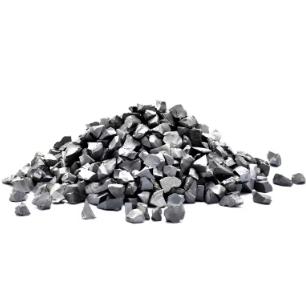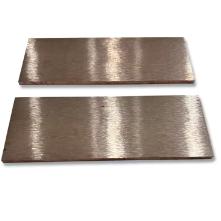License Plates: How Thick Is That Metal, Anyway?
(What Gauge Metal Is A License Plate)
You see license plates every day. They’re on cars, trucks, motorcycles. They’re like nametags for vehicles. But have you ever wondered what they’re made of? More specifically, how thick that metal actually is? Let’s talk about it.
First, “gauge” is just a way to measure metal thickness. The lower the gauge number, the thicker the metal. Think of it like spaghetti. A “thin” spaghetti might be a higher number, while a “thick” one is a lower number. Metal works the same way. A 12-gauge steel sheet is thicker than a 20-gauge one. Simple, right?
Most license plates aren’t built like tanks. They need to be sturdy but not too heavy. So what gauge do they use? In the U.S., standard plates are usually made from aluminum. The typical gauge ranges between 20 and 24. Let’s break that down. A 20-gauge aluminum plate is about 0.032 inches thick. A 24-gauge one is thinner, around 0.020 inches. That’s roughly the thickness of a credit card. Not exactly bulletproof, but it gets the job done.
Why not go thicker? Cost and practicality. Thicker metal costs more. It’s also heavier. Imagine slapping a chunk of thick steel on your car. It’d add unnecessary weight. Plus, license plates don’t need to survive a meteor strike. They just need to hold up against weather, minor bumps, and the occasional grocery cart.
Some places use steel instead of aluminum. Steel plates are less common now, but you’ll still find them on older vehicles or in certain regions. Steel is stronger than aluminum at the same thickness. A 24-gauge steel plate is tougher than a 24-gauge aluminum one. But steel rusts. Aluminum doesn’t. That’s why most modern plates switched to aluminum—it lasts longer without turning into a flaky mess.
What about motorcycles or temporary tags? They often use thinner gauges. A motorcycle plate might be 26-gauge aluminum. It’s lighter, which matters for smaller vehicles. Temporary tags? Those flimsy paper ones are getting replaced by thin metal or even plastic in some areas. Durability isn’t a top priority for something that’ll be tossed in a month.
Custom or decorative plates follow the same rules. Fancy designs, logos, or vanity text don’t change the thickness. They’re still stamped or printed onto standard-gauge metal. The only difference is the paint job.
Now, what if you need to replace a bent plate? You can’t just grab any sheet metal from the hardware store. Most states have strict rules about plate materials and thickness. Using the wrong gauge could get you a ticket. Always check local laws before DIY-ing a replacement.
Ever notice how license plates feel colder than the surrounding car parts? That’s the metal. Aluminum conducts heat faster than steel or plastic. Next time you touch a plate on a chilly morning, you’ll know why it feels like an ice cube.
Thickness also affects how plates are made. They’re stamped using giant presses. Thinner metal is easier to shape. It also saves wear and tear on the machinery. Factories can pump out more plates per hour if the metal bends without a fight.
Some people collect old license plates. If you’ve got a vintage one, its thickness might tell you its age. Pre-1960s plates were often steel. Later ones switched to aluminum. Measuring the gauge could help date your collection.
What’s the takeaway? License plates are thin but tough. They balance durability, weight, and cost. Next time you’re stuck in traffic, take a closer look at the plate in front of you. That piece of metal has more engineering behind it than you might think.
(What Gauge Metal Is A License Plate)
Oh, and if you ever need to fix a rusty plate? Sand it down, spray paint it, and call it a day. Just don’t change the numbers. The cops tend to notice that.
Inquiry us
if you want to want to know more, please feel free to contact us. (nanotrun@yahoo.com)


